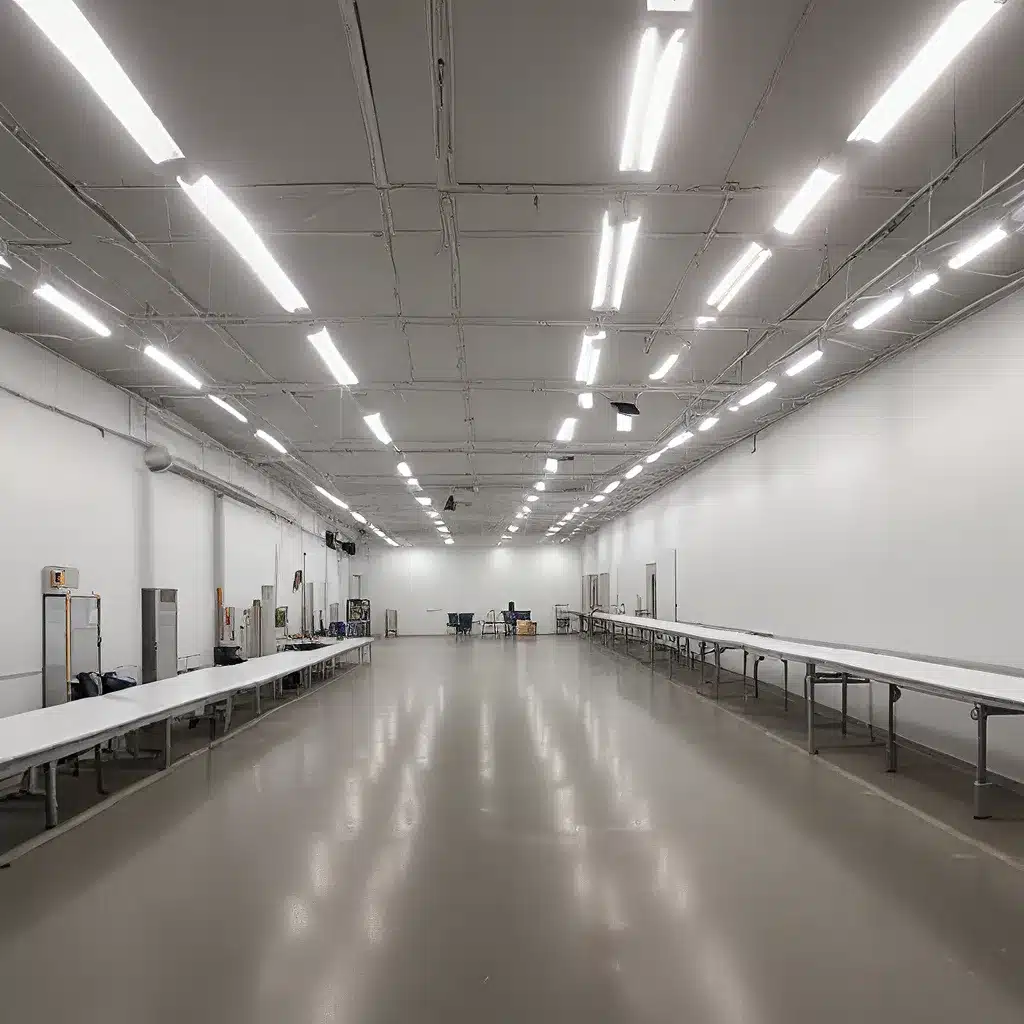
As an energy-conscious homeowner or business owner, I’m always on the lookout for ways to reduce my electricity bills and do my part for the environment. And one technology that’s been catching my eye lately is the humble LED light bulb. These little powerhouses are not only more energy-efficient than traditional incandescent bulbs, but they’re also becoming increasingly affordable and accessible.
The Rise of LED Lighting
I remember when LED lights first started popping up on store shelves – they were often quite expensive and had a somewhat harsh, unnatural glow. But boy, have things changed! The rapid development of LED technology has resulted in a stunning array of products that are not only incredibly energy-efficient, but also provide high-quality, warm, and customizable lighting.
According to the U.S. Department of Energy, residential LEDs (especially those with the ENERGY STAR® rating) use at least 75% less energy and last up to 25 times longer than incandescent lighting. That’s a pretty impressive statistic! And with the majority of lighting installations in the U.S. anticipated to use LED technology by 2035, the potential energy savings are truly staggering.
The Department of Energy estimates that energy savings from LED lighting could top 569 TWh annually by 2035, which is equivalent to the annual energy output of more than 92 1,000-MW power plants. That’s a whole lot of energy – and money – that could be saved simply by switching to LED bulbs.
Illuminating the Advantages of LED Lighting
But it’s not just the energy savings that make LEDs so compelling. These little lights are incredibly versatile and adaptable, with a wide variety of home and industrial applications. From street lights and parking garage lighting to refrigerated case lighting and task lighting, LEDs are quickly becoming the go-to choice for all sorts of lighting needs.
One of the key advantages of LEDs is their directional nature, which makes them ideal for lighting tight spaces like countertops and cabinets. And with the ability to customize the light color and brightness, LEDs can be tailored to suit any mood or purpose.
LED parking lot lights, for example, are becoming increasingly popular due to their energy efficiency, long lifespan, and ability to provide bright, uniform lighting for large outdoor areas. And in warehouses and industrial settings, LED lighting can dramatically reduce energy consumption and maintenance costs.
But perhaps one of the most exciting aspects of LEDs is their potential for future technological advancements. As the technology continues to evolve, we’re likely to see even more impressive improvements in efficiency, cost, and versatility. Who knows what kind of lighting marvels we might be using in our homes and businesses 10 or 20 years from now?
Making the Switch to LED Lighting
So, if you’re like me and you’re looking to save some money on your energy bills while also doing your part for the environment, switching to LED lighting is definitely worth considering. And the good news is that the process is easier than ever.
Gone are the days of limited LED options and high prices. Nowadays, you can find LED lamps and fixtures to replace just about any type of incandescent or fluorescent bulb, from the humble 40-watt all the way up to the mighty 100-watt. And with the wide range of color temperatures and light output options, you’re sure to find the perfect LED solution for your needs.
Of course, it’s important to do your research and read the Lighting Facts Label to ensure you’re getting the right brightness and color for your specific application. But with a little bit of planning and some strategic LED purchases, I’m confident you can start reaping the benefits of these amazing little lights.
Bright Ideas for the Future
As I look ahead to the future of lighting, I can’t help but feel excited about the potential of LED technology. Researchers and engineers are constantly working to push the boundaries of what’s possible, exploring new materials, designs, and applications.
Who knows, we might one day see LED lights that can change color on demand, automatically adjust to ambient lighting conditions, or even harvest energy from the environment to power themselves? The possibilities are truly endless.
And let’s not forget the broader implications of widespread LED adoption. The energy savings from LED lighting could have a significant impact on our reliance on fossil fuels and our overall carbon footprint. Imagine a world where the majority of our lighting needs are met by these highly efficient, eco-friendly bulbs – it’s a future that’s well within our reach.
Of course, there’s still a lot of work to be done, and not everything is certain. Some experts believe that the pace of LED adoption may slow in the coming years, and there are likely to be ongoing debates about the best way to integrate this technology into our homes, businesses, and public spaces.
But one thing is clear: LED lighting is here to stay, and it’s only going to get better. So, whether you’re a homeowner looking to save on your electric bills or a business owner aiming to reduce your environmental impact, I’d encourage you to keep a close eye on the latest developments in this exciting field. Who knows, the next great lighting innovation might just be right around the corner!

